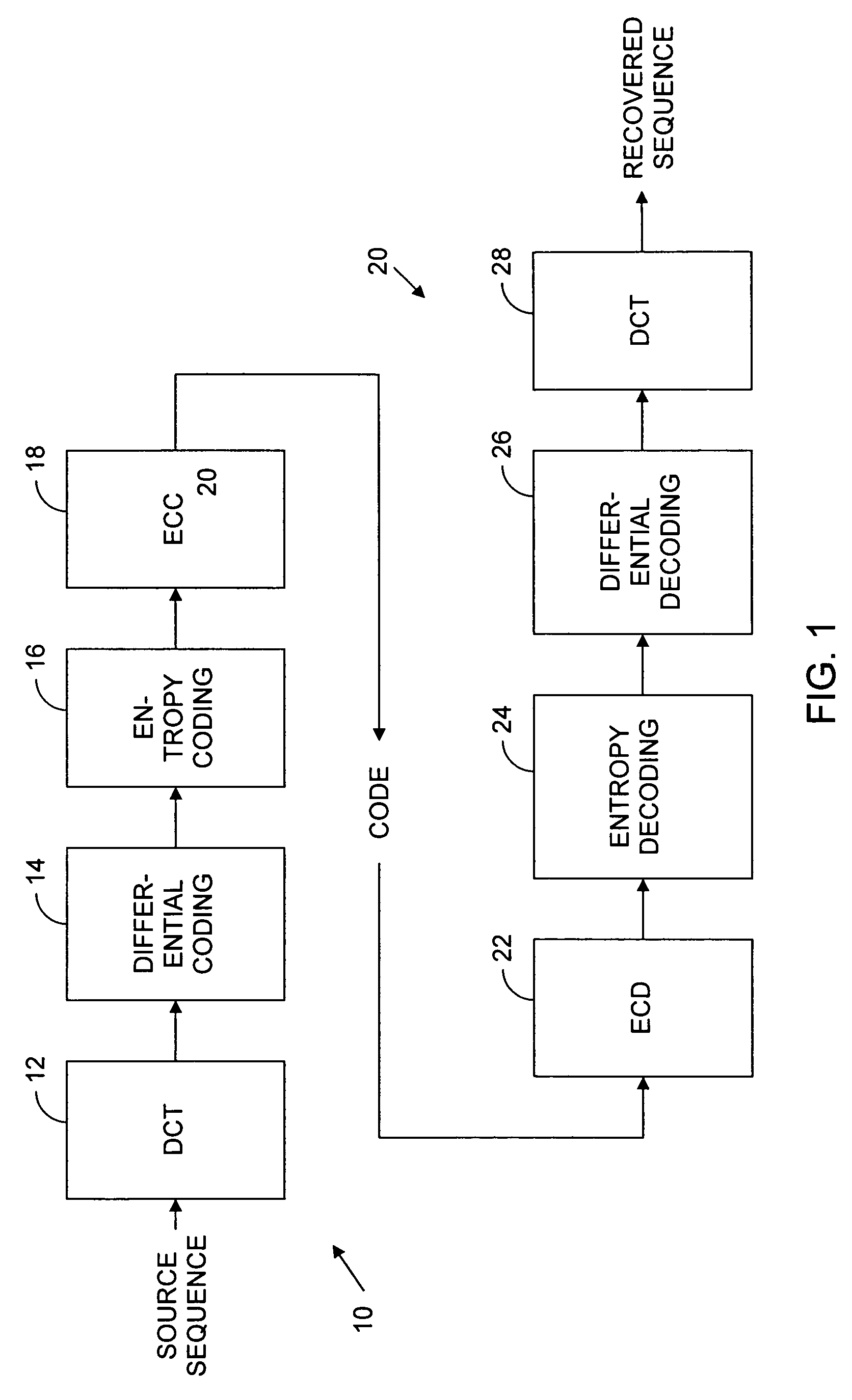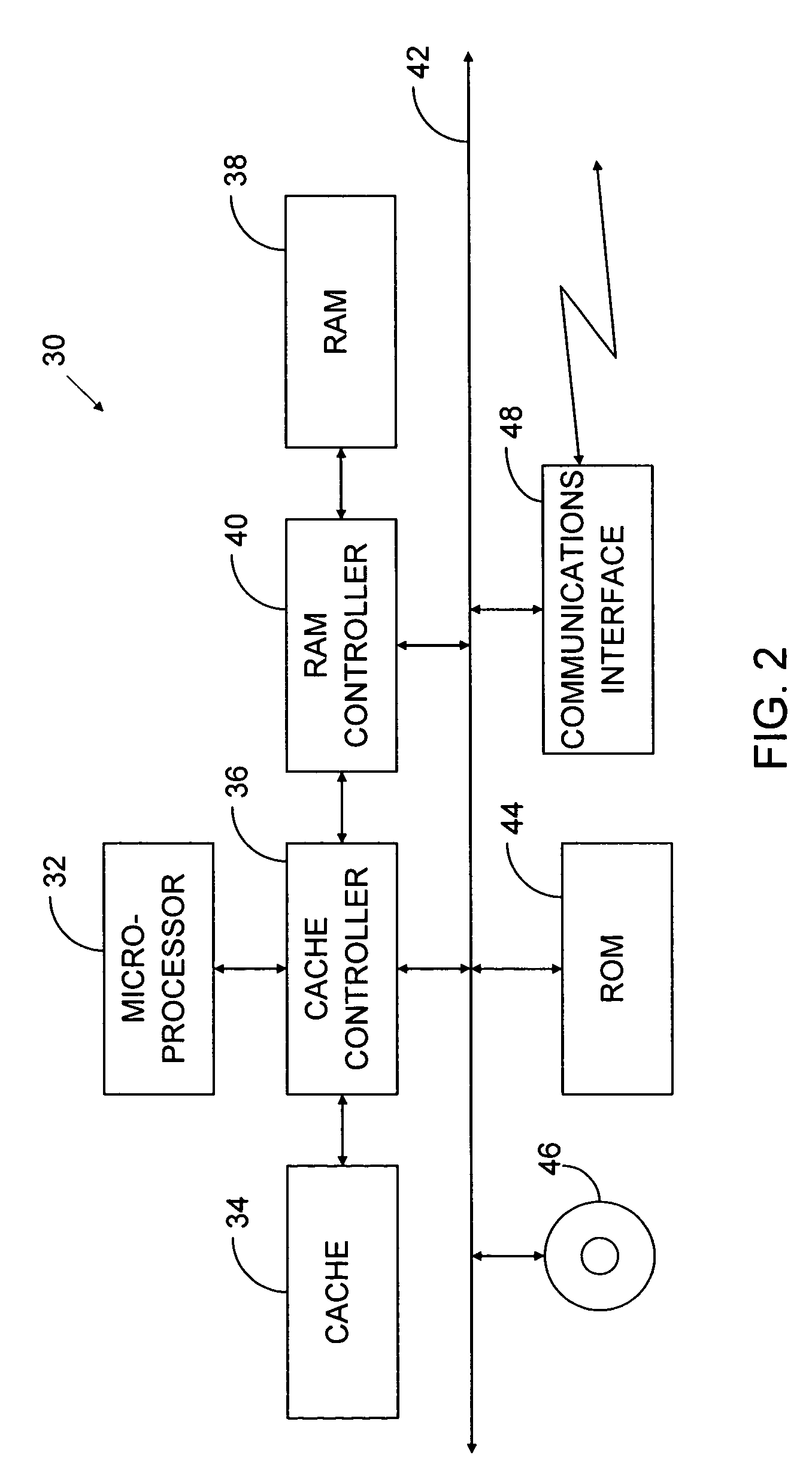Modeling for enumerative encoding
a model and encoding technology, applied in the field of entropy encoding and decoding, can solve the problems of code length exceeding the entropy by a potentially very large ratio, huffman code is suboptimality, and huffman coding is especially inefficien
- Summary
- Abstract
- Description
- Claims
- Application Information
AI Technical Summary
Benefits of technology
Problems solved by technology
Method used
Image
Examples
Embodiment Construction
[0055]For the sake of explanation, it is convenient to represent the operations of the modeling approaches below in a manner similar to that in which FIG. 1 does, i.e., by separate blocks representing successive operations. And, in some environments, those blocks could represent respective different circuits. In many cases, though, some or all would be embodied in the same circuitry; all of the encoding and / or decoding circuitry could, for example, be implemented in the same computer system, such as the one that FIG. 2 represents.
[0056]In that drawing, a computer system 30 includes a microprocessor 32. Data that the microprocessor 32 uses, as well as instructions that it follows in operating on those data, may reside in on-board cache memory or be received from further cache memory 34, possibly through the mediation of a cache controller 36. That controller can in turn receive such data and instructions from system read / write memory (“RAM”) 38 through a RAM controller 40 or from var...
PUM
 Login to View More
Login to View More Abstract
Description
Claims
Application Information
 Login to View More
Login to View More - R&D
- Intellectual Property
- Life Sciences
- Materials
- Tech Scout
- Unparalleled Data Quality
- Higher Quality Content
- 60% Fewer Hallucinations
Browse by: Latest US Patents, China's latest patents, Technical Efficacy Thesaurus, Application Domain, Technology Topic, Popular Technical Reports.
© 2025 PatSnap. All rights reserved.Legal|Privacy policy|Modern Slavery Act Transparency Statement|Sitemap|About US| Contact US: help@patsnap.com



